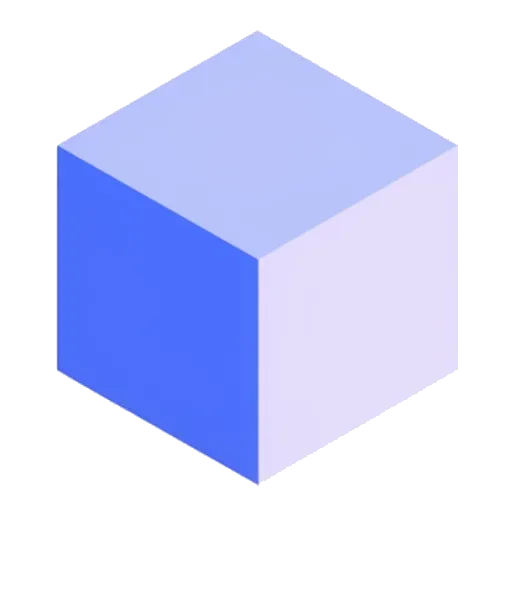TL;DR: Modernizing your COBOL mainframe isn’t one choice; it’s a spectrum of strategies from rehosting (“lift and shift”) to automated refactoring to a full rewrite. This guide maps out each path, comparing their costs, risks, and agility benefits to help you choose the right direction for your business.
For over 60 years, it has been the silent, powerful engine of the global economy. The mainframe, running trillions of lines of COBOL code, processes your credit card swipes, books your flights, and calculates your insurance premiums. It is arguably the most reliable computing platform ever invented.
It’s also a gilded cage.
The astronomical costs of MIPS processing and software licensing, the ever-shrinking pool of skilled COBOL developers, and the sheer inability to connect these monolithic systems to the modern digital world have turned your greatest asset into your biggest bottleneck.
You know you need to modernize. But the path forward is a confusing fog of vendor promises, competing methodologies, and immense risk. This guide is your compass. We’ll cut through the noise, map the four primary paths out of the mainframe cage, and help you set a clear direction.
🤔 Why Mainframe Modernization is an Urgent Priority
Let’s be clear: this is no longer a technical upgrade to be debated by architects. It’s a fundamental business survival strategy. The pressure to act is coming from three directions at once.
- The Crushing Cost: The operational expense of a mainframe is staggering. You’re not just paying for the hardware; you’re paying for specialized software licenses, maintenance contracts, and per-instruction processing fees that have no equivalent in the cloud world.
- The Skills Cliff: The generation of developers who built and maintained these systems is retiring, and universities haven’t taught COBOL in decades. You are facing a demographic time bomb that makes your systems more expensive and riskier to maintain each year.
- The Agility Gap: Your business wants to leverage AI, build mobile-first customer experiences, and make data-driven decisions in real-time. Your mainframe, a batch-oriented system from the 1960s, simply cannot provide the agility required to compete.
These systems are the textbook definition of what a legacy system is—absolutely critical to the business, but a fundamental barrier to its future.
🧭 The Spectrum of Modernization: Four Primary Paths
The most important thing to understand is that “mainframe modernization” is not a single activity. It’s a spectrum of strategies, each with a different level of risk, cost, and reward. Choosing the right path depends entirely on your business goals.

Let’s walk through each of the four primary paths, from the least to the most disruptive.
🚀 Path 1: Rehosting (The “Lift and Shift”)
This is the most conservative and often the fastest path.
- What it is: You move the COBOL applications, their data, and their job control language (JCL) largely as-is from the physical mainframe to a mainframe emulator. This emulator is software that runs on commodity x86 servers, either in your own data center or, more commonly, in the cloud.
- Pros:
- Speed: It’s the quickest way to exit your expensive mainframe hardware contract.
- Low Risk: The application code and business logic remain unchanged, minimizing the risk of functional defects.
- Immediate Cost Savings: You can immediately slash your spending on IBM hardware and MIPS-based software licensing.
- Cons: You’ve just moved your technical debt to a cheaper apartment. You still have a COBOL application, a monolithic architecture, and the underlying skills gap problem. You’ve reduced your costs, but you haven’t improved your agility.
- Key Players: This space is led by companies like Micro Focus and Astadia, and it’s a core part of the AWS Mainframe Modernization service.
🛠️ Path 2: Replatforming (The “Lift and Reshape”)
This is an incremental step up from rehosting, adding targeted improvements during the migration.
- What it is: You perform a lift and shift, but you also make some key architectural changes. The most common example is migrating the mainframe database—like DB2, VSAM, or IMS—to a modern relational database in the cloud, such as AWS Aurora, Google Cloud SQL, or Azure SQL.
- Pros: Begins to break down the monolith. Your data is now in a standard, accessible format, making integration, reporting, and analytics much easier.
- Cons: The risk and complexity are higher than a simple rehost. Data migration must be flawless, and performance tuning can be a significant challenge.
- Key Players: The same vendors who handle rehosting often support replatforming as the next logical step.
🤖 Path 3: Automated Refactoring & Conversion (The “Transformation”)
This is the most ambitious and transformative of the “modernize-the-code” approaches.
- What it is: This path uses highly sophisticated tools to automatically parse, analyze, and convert the COBOL source code into a modern, object-oriented language, most commonly Java or C#. The goal is to preserve the exact business logic while transforming the underlying technology.
- Pros: If successful, this is the holy grail. You escape the COBOL ecosystem entirely, your application now runs on a modern stack (like a Java Virtual Machine), and your development teams can start using modern DevOps tools and practices.
- Cons:
- Complexity & Risk: This is an incredibly complex process. “Automated” is never truly 100%; these projects require significant manual oversight and correction.
- Code Quality: A major risk is producing “COBOL-in-Java”—code that is syntactically correct Java but is structured like a COBOL program, making it nearly impossible for a Java developer to understand and maintain.
- Testing: You must perform exhaustive, end-to-end testing to prove that the converted application produces identical results to the original mainframe system.
- Key Players: This is a specialist field with vendors like Advanced, Blu Age (now part of AWS), and TSRI.
✨ Path 4: Rewrite / Replace (The “Reimagination”)
This is the only path that doesn’t try to preserve the old code. It starts from a clean slate.
- What it is: You treat the existing COBOL system as a set of business requirements, not as a codebase to be migrated. You then design and build a completely new, cloud-native application from scratch that meets those requirements.
- Pros: The best possible outcome. You are left with a modern, agile, efficient, and well-documented system that is perfectly aligned with your future business goals.
- Cons: By far the highest risk, longest timeline, and most expensive option. The history of IT is littered with failed rewrite projects. The biggest danger is failing to perfectly understand and replicate every nuance of the business logic hidden in the old COBOL code.
- Key Players: This is typically led by your internal development organization, often with significant support from major cloud providers and global systems integrators like Accenture, Infosys, or Deloitte. The IBM Z and Cloud Modernization Center also plays in this space, often advocating for a hybrid approach.
📊 Choosing Your Path: A Strategic Comparison
There is no single “best” strategy. The right choice is a business decision, not just a technical one. It depends on your primary driver. Are you trying to cut costs quickly, or are you trying to build a platform for future innovation?
| Strategy | Primary Goal | Risk | Cost (Short-term) | Cost (Long-term) | Agility Gain |
|---|---|---|---|---|---|
| Rehost | Immediate Cost Reduction | Low | Medium | Medium | Low |
| Replatform | Data Modernization | Medium | Medium-High | Medium-Low | Medium |
| Refactor | Language Modernization | High | High | Low | High |
| Rewrite | Business Transformation | Very High | Very High | Very Low | Very High |
✅ Conclusion: Modernization is a Journey, Not a Destination
The mainframe has been a loyal servant, but its time as the center of the enterprise IT universe is over. Navigating the path forward requires a clear-eyed assessment of your own organization’s goals, budget, and appetite for risk.
For many, the journey will be a hybrid one—perhaps rehosting less critical applications to get quick cost savings while embarking on a longer-term refactoring or rewriting project for the core systems that differentiate the business.
Choosing your path from the compass is the crucial first step. Executing that choice successfully is a massive undertaking that requires a rock-solid strategic framework. This entire process is a cornerstone of any major digital transformation, as we detail in our complete Legacy System Modernization Guide.
❓ FAQ: COBOL Modernization Questions
Is COBOL really going to die?
No, probably not ever completely. There is so much COBOL code running the world that it will likely exist in some form for decades. The issue isn’t that the language will disappear; it’s that the hardware it runs on is too expensive and the talent pool required to maintain it is vanishing. The ecosystem is dying, even if the language isn’t.
What is the biggest reason mainframe modernization projects fail?
The number one reason is an incomplete understanding of the existing system’s business logic. Teams embarking on a rewrite or refactoring project underestimate the complexity hidden in decades of patches and modifications. This leads to massive delays, cost overruns, and final products that don’t meet the business’s needs. A thorough “software archaeology” phase is critical.
Can I do this in-house, or do I need a specialist partner?
Except for the very largest and most sophisticated enterprises, a specialist partner is almost always required. These are not standard IT projects. The tools are highly specialized, the methodologies are unique, and the experience of having done it before is invaluable. Your internal team’s role is to provide the business knowledge; the partner’s role is to provide the modernization expertise.




